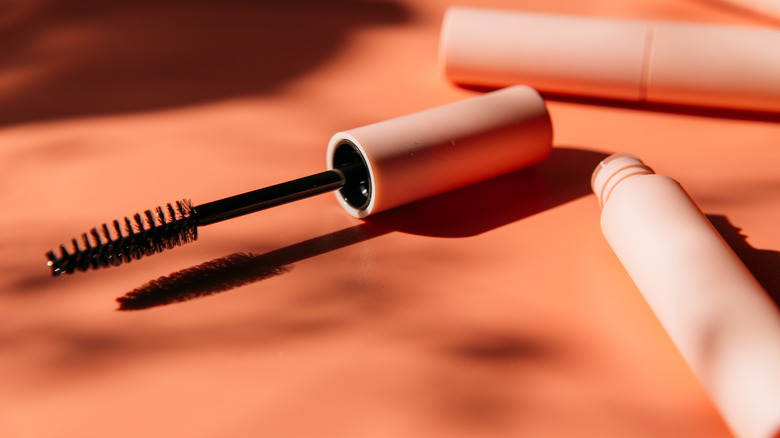Study Reveals New Finds About Toxic Chemicals In U.S. Cosmetics
If you're like the many people who use makeup on a regular basis, you may want to rethink your routine. Researchers say more than 50% of the cosmetics sold in the United States contain high amounts of toxic chemicals linked to some serious health conditions (via CBS News).
The type of chemicals in question? Fluorine, an indicator of per- and polyfluoroalkyl substances (PFAS), used in nonstick frying pans, water-repellent sports gear, grease-resistant food packaging, and more. Scientists have found more and more links to PFAS exposure and adverse health issues like low birth weights, immune system performance, cancer, and thyroid hormone problems (via Environmental Protection Agency).
The June 2021 study, which was conducted by the University of Notre Dame and published in Environmental Sciences and Technology Letters, found that out of 230 cosmetics, 47% of mascara products, 48% of the lip products, and 56% of the foundations and eye products contained high fluorine levels. Long-lasting lipstick and waterproof mascara were especially high on the list, with 62% and 82% of such products containing fluorine, respectively. Additional testing of 29 fluorine-high products found up to 13 specific PFAS chemicals, according to CBS News. And now for the most alarming part: Researchers said only one of the products listed PFAS as an ingredient, meaning you'd typically have no way of knowing about it from reading the label.
Why some cosmetics contain these chemicals
The Personal Care Products Council, which represents the cosmetics industry, said in a statement that the PFAS can be found at trace levels in cosmetics like lotions, nail polish, eye makeup, and foundation to condition and smooth the skin or for product consistency and texture. The U.S. Food and Drug Administration regulates cosmetics and poses safety requirements on products before they can be marketed to consumers. "Since trace amounts are not intentionally added to products, they are not required to be listed on the label," Chief Scientist Alexandra Kowcz said in the statement. "FDA recognizes their possible presence and offers guidance on allowable levels."
The Notre Dame study did not name specific products or brands, but materials included with the study showed that the research team tested many popular products (via Associated Press). Its purpose wasn't to link PFAS health effects to cosmetic use, but physics professor and principal study investigator Graham Peaslee said there are immediate and long-term risks to exposure.
"PFAS is a persistent chemical. When it gets into the bloodstream, it stays there and accumulates,″ Peaslee told the Associated Press. In the meantime, the EPA is continuing to gather information about PFAS uses and risks, as lawmakers weigh legislation on PFAS contamination, according to CBS News.


